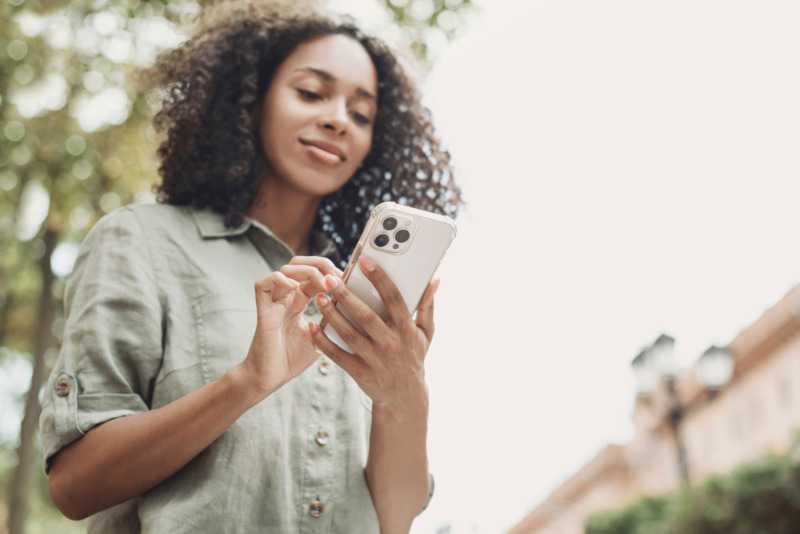Insights
3 Tips To Make A Mobile Application That Your Customers Actually Want To Use
Jack McGrath — 13 August, 2024

Since the dawn of the iPhone in 2007 and the Android HTC Dream in 2008, companies have been vying to be *the* app you go to first each day. Billions of dollars are poured into apps by companies like Apple, Google, Meta, Snapchat Inc, and TikTok because on average, people (Americans) spend nearly 4 and a half hours on their phones every day.
As part of a SimForm study, it was discovered that the average smartphone user has only 40 apps installed on their device, but 89% of their time is spent on just 18 of those apps. To be part of those 18 top apps, or even the 40 they have installed will take monumental effort, planning, design, and execution.
Sure, the odds may be against you, but it’s still possible to make an amazing and popular app. We here at Chamonix believe in you and are more than willing to try and help you make *the* app that everyone will turn to. Sadly, there isn’t some magic AI wand (yet) that you can wave around and see an app materialise in front of you. A great app needs a few qualities that we’re happy to share with you. So, let’s get to it!
1. Make your first impression count!
Convert your potential users into actual users by improving your store listing, app onboarding, privacy statements, and your website.
Store Listing
Your store listing is the first place for users to quickly learn about your app. While it is incredibly important to have an accurate description, potential users are unlikely to read the descriptions and promotions on the store page. Instead, focus your effort on setting tags that users are likely to search for. Do thorough research into how your target user is likely to search for your app.
The screenshots/images are also very important. Apple and Google ask you to provide “screenshots” from your app. The best apps have beautifully designed or illustrated images that incorporate their app’s screenshots. This is your best chance to provide some key reasons to use your app.
Onboarding
*Onboarding* is the set of steps the user undergoes from when they run your app for the first time, until they can access the app’s main content. Onboarding is vital for the following reasons:
- It tells you why you should use your app
- It lets your user sign into their account, or create a new one
A strong, simple and fast onboarding flow will hopefully result in more users getting past installation to the core functionality of your app. Learn more about the Do’s and Don’ts of Mobile App Onboarding here.
Privacy
How difficult is it to read your app’s privacy policy? Consider making it easy to read for all literacy levels, and easy to understand.
A difficult to read privacy policy, or one that takes the user for granted could be the catalyst for potential users to not install or use your app.
Website
How will people learn about your app on the internet? Having a good app in the store may not be enough. Having an informative, useful, and stylish website will give you:
- A single place that you can link potential users to, to go and download your app. Don’t forget that you will have two URLs to download the app: one for the App Store, and one for the Google Play Store.
- Ability to be found and discovered in search engines.
- A location to send people from ads on platforms like Google or Facebook.
2. Provide a strong reason to use and return to your app
You’ve created a great first impression, and the user has downloaded your app. How do you now make sure that they continue to use it after the first time?
The first experience is key to the user returning
People will continue to return to your app if they find that they have received some benefit from it. On Duolingo, you’ll have your first lesson in a new language. On Facebook, you’ll connect with a new friend. On Apple TV, you’ll be able to watch a show’s premiere.
Ensure that you provide your user with a great first experience of your app’s primary purpose.
Get your user back with notifications
Push and local notifications are a perfect way to get your user back into your app. A push notification is a notification that you trigger and send from your backend infrastructure, like “Get a burrito for half price – today only!”. Whereas a local notification is one that is triggered by the device, like “Your 5 minute timer is finished”.
There is an art to designing a notification schedule: notifications should be sent frequently enough to drive the user into your app, but not so often that they turn them off. A couple per day is probably the maximum, whereas once per week is the minimum. Keep in mind that on iOS you can only schedule 64 local notifications at a time!
3. Design something familiar, but exciting!
Iterate over your designs
A good user interface takes time to establish, test out with users and finalise. You will need to iterate over your own designs more than once before they are shipped out to production.
Consider running sessions with end users at multiple points in the design process. You will want to know what the user needs and wants, and whether your designs meet those needs and wants.
Simple first, fun later
To get started in building your app, the designers will need to mock out some low-fidelity wireframes first, ideally with a working prototype. While the developers begin developing the base application, you now have the chance to apply your fun and exciting theme to each page.
It may be easy to just hold off the developers until you have a *final* design but you then have the following problems:
- Developers could have been building a functional app by now that could be used for testing internally. Problems could have been fixed earlier.
- When is a design final? Designs will change endlessly, so how do you know that the design is actually *done*?
Don’t try to rebuild navigation
Apple and Google have both created a standard navigation experience. It may be tempting to want to try and recreate the navigation controllers with a new design, but you’ll face the following problems:
- Users are already incredibly familiar with the standard navigation experience. Changing how buttons work or function will only annoy users.
- The standard navigation already has a lot of accessible properties baked into them. If you build your own, you will need to ensure that every button and label is accessible and understandable.
By building an app with a great first impression, a reason to come back and a familiar but exciting design, we hope you will be able to make a fantastic and successful mobile application. One that users will download and then continue to use forever!
Here at Chamonix, we love application development! Contact us now to help gain and retain users.


